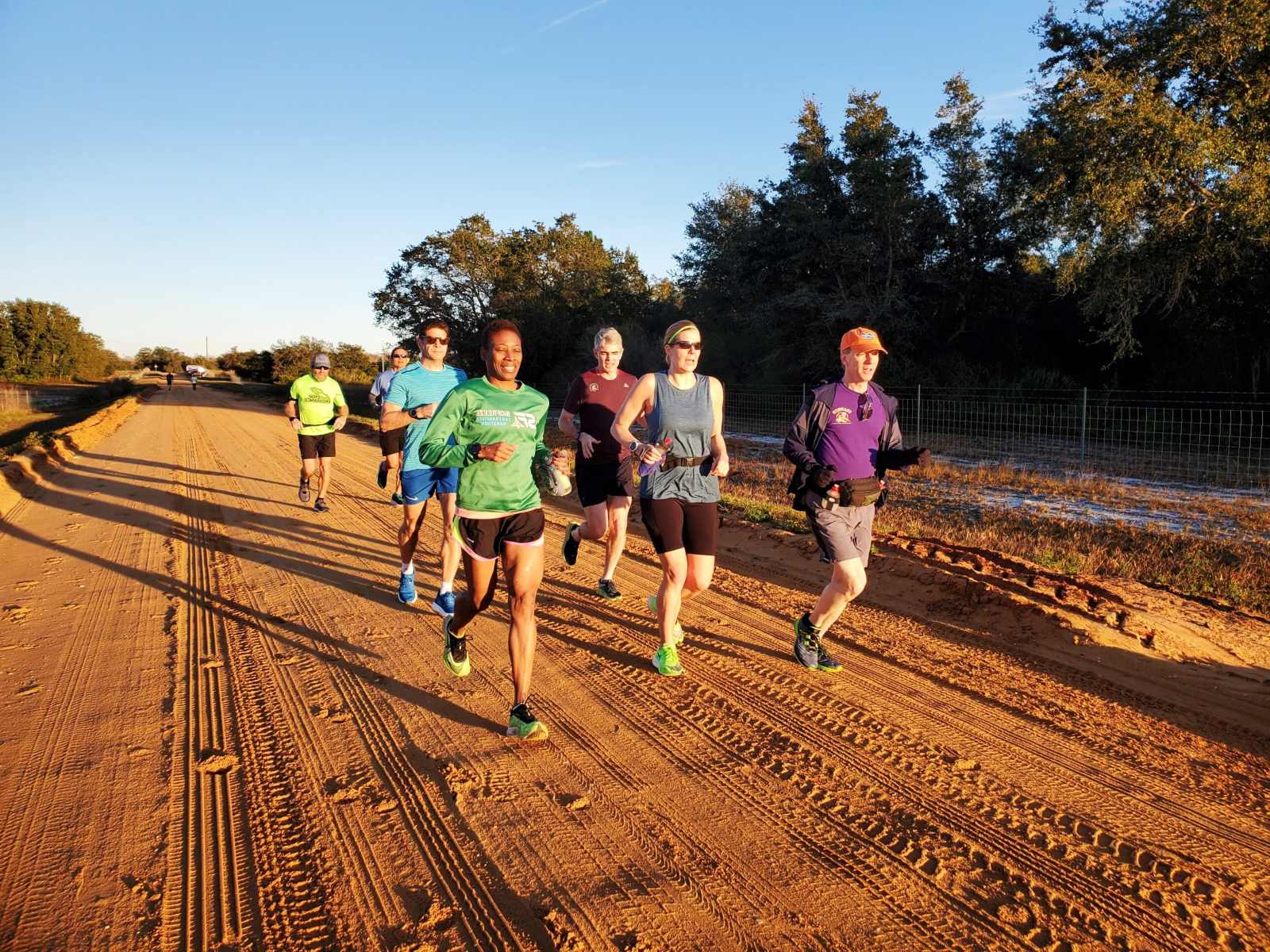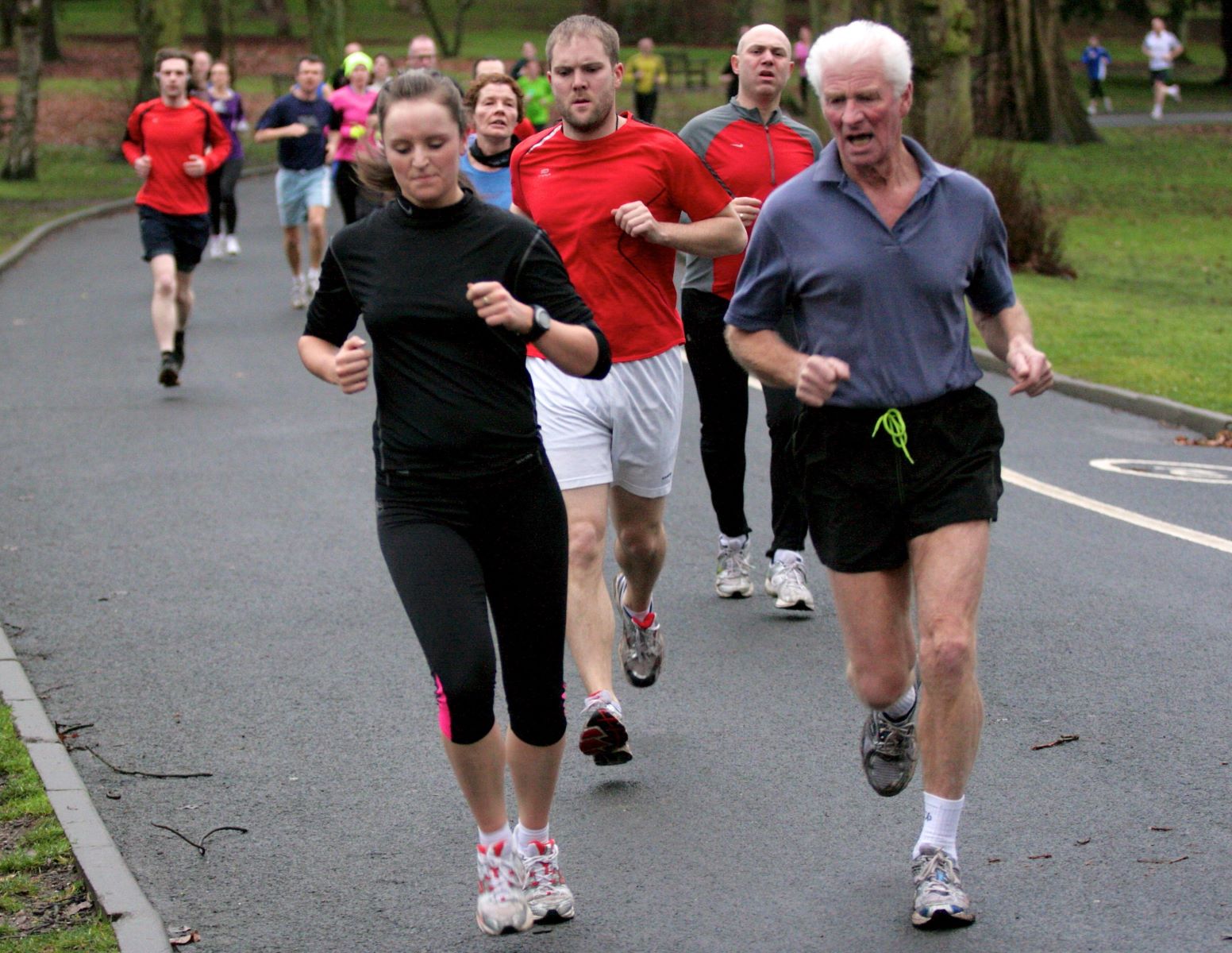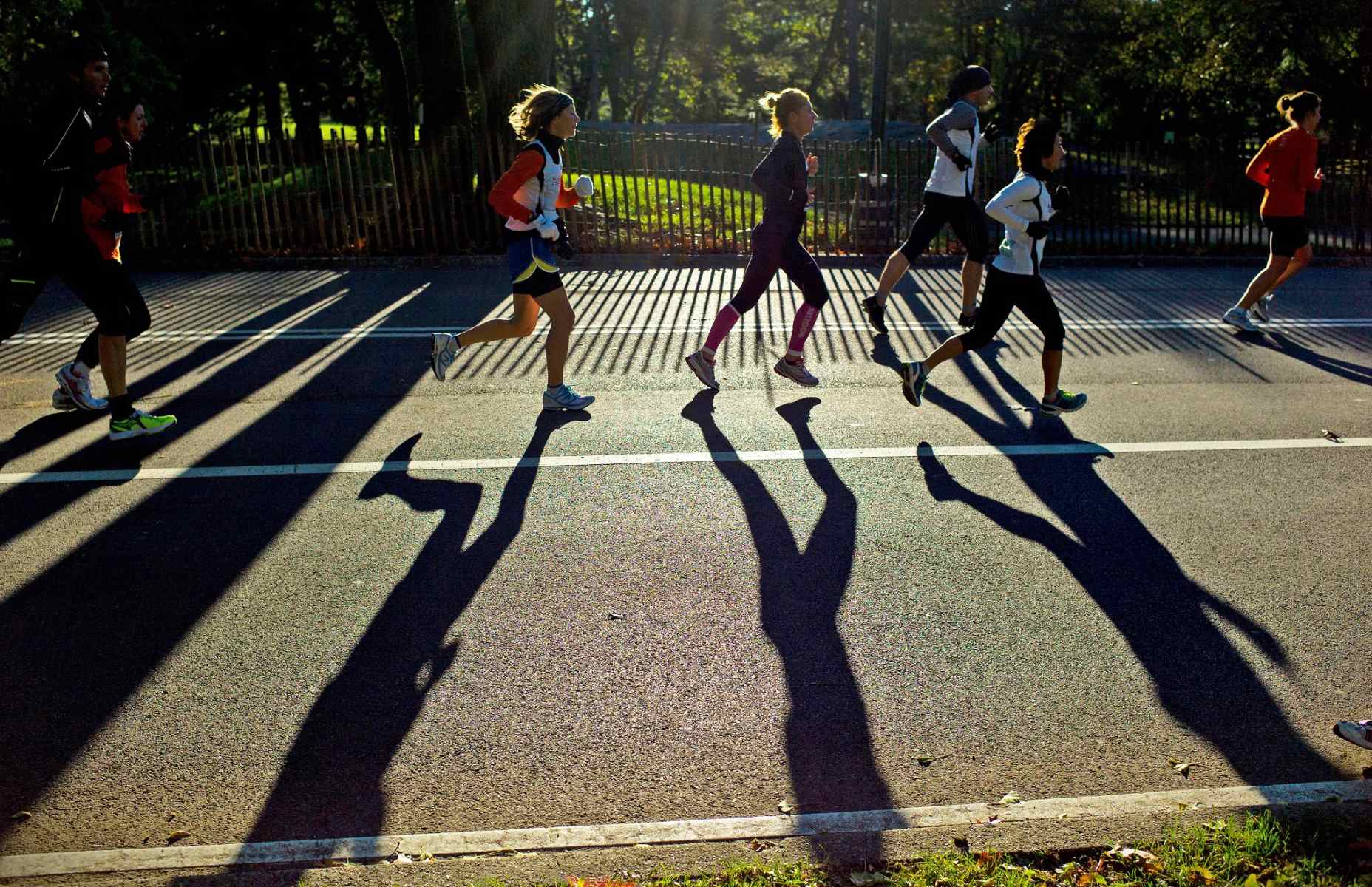Home>Health & Nutrition>Determining Your Caloric Requirements For Running


Health & Nutrition
Determining Your Caloric Requirements For Running
Published: February 23, 2024
Learn how to calculate your caloric needs for running with our comprehensive guide on health and nutrition. Reach your fitness goals with personalized dietary recommendations.
(Many of the links in this article redirect to a specific reviewed product. Your purchase of these products through affiliate links helps to generate commission for Therunningadvisor.com, at no extra cost. Learn more)
Table of Contents
Understanding the Basics of Caloric Requirements
Caloric requirements refer to the amount of energy, measured in calories, that the body needs to maintain its current weight. For runners, understanding these requirements is crucial for optimizing performance and overall health. The concept is rooted in the fundamental principle of energy balance, which dictates that the calories consumed through food and beverages should align with the calories expended through metabolic processes and physical activity.
When it comes to running, the body's energy demands are significantly influenced by various factors, including basal metabolic rate (BMR), physical activity level, and specific training regimens. BMR represents the energy expended at rest to maintain essential bodily functions such as breathing, circulation, and cell production. This forms the foundation of caloric requirements, as it accounts for the majority of daily energy expenditure.
In addition to BMR, physical activity level plays a pivotal role in determining caloric needs. For runners, the energy expended during workouts, runs, and other forms of exercise must be factored into the overall equation. The intensity, duration, and frequency of training sessions directly impact the total caloric expenditure, necessitating a more comprehensive understanding of individualized needs.
Moreover, the body's composition, including muscle mass and overall fitness level, can also influence caloric requirements. Muscles are metabolically active tissues that demand more energy at rest, thereby affecting the baseline energy expenditure. Furthermore, the body's adaptive response to running and exercise can lead to changes in metabolic rate and nutrient utilization, further emphasizing the dynamic nature of caloric requirements.
Understanding the basics of caloric requirements for running involves recognizing the intricate interplay between energy intake and expenditure. By comprehending the fundamental principles of energy balance, BMR, physical activity level, and individualized factors, runners can effectively tailor their nutritional strategies to support their training, optimize performance, and promote overall well-being.
Read more: Determining The Optimal Pace For Long Runs
Factors Affecting Caloric Needs for Runners
The caloric needs of runners are influenced by a myriad of factors that extend beyond the basic principles of energy balance. Understanding these factors is essential for tailoring nutrition to support training, enhance performance, and promote overall well-being.
1. Running Intensity and Duration
The intensity and duration of running sessions directly impact caloric expenditure. High-intensity runs and longer distances require greater energy expenditure, thereby increasing caloric needs. For instance, a long-distance runner training for a marathon will have significantly higher caloric requirements compared to a recreational runner focusing on shorter, less intense runs.
2. Body Composition and Muscle Mass
The body's composition, particularly the proportion of lean muscle mass, plays a pivotal role in determining caloric needs. Muscle tissue is metabolically active, meaning it requires more energy at rest. Therefore, individuals with higher muscle mass have elevated basal metabolic rates, leading to increased caloric requirements to support muscle maintenance and repair.
3. Metabolic Efficiency
Individual variations in metabolic efficiency can influence caloric needs. Some runners may have inherently faster or slower metabolic rates, impacting the rate at which their bodies utilize energy. Factors such as genetics, age, and hormonal balance contribute to metabolic efficiency, ultimately affecting the overall caloric requirements for runners.
Read more: Determining The Ideal Heart Rate For Running
4. Environmental Conditions
Environmental factors, such as temperature and altitude, can affect caloric expenditure during running. Running in extreme heat or cold demands additional energy for thermoregulation, while altitude running may elevate energy requirements due to the increased physiological stress on the body.
5. Training Phase and Goals
The specific phase of training and the associated goals also impact caloric needs. During intense training phases, such as speed or endurance building, runners may require higher caloric intake to support increased energy demands and facilitate recovery. Conversely, during tapering periods or off-season rest, caloric needs may decrease accordingly.
6. Gender and Age
Gender and age are significant determinants of caloric requirements for runners. Generally, men tend to have higher muscle mass and lower body fat percentages than women, resulting in higher BMR and caloric needs. Additionally, age-related changes in metabolism and hormonal fluctuations can influence energy expenditure, necessitating adjustments in caloric intake.
Understanding these multifaceted factors is crucial for runners to accurately assess their caloric needs and optimize their nutritional strategies. By considering these variables, individuals can tailor their dietary intake to support their training, enhance performance, and maintain overall health and well-being.
Calculating Your Basal Metabolic Rate (BMR)
Calculating your Basal Metabolic Rate (BMR) serves as a fundamental step in understanding your body's foundational energy needs. BMR represents the energy expended by the body at rest to maintain essential physiological functions, such as breathing, circulation, and cell production. Several formulas have been developed to estimate BMR, with the Harris-Benedict equation and the Mifflin-St Jeor equation being widely utilized for their accuracy and applicability across diverse populations.
The Harris-Benedict equation, initially developed in 1919 and later revised, takes into account an individual's age, weight, height, and gender to calculate BMR. For men, the equation is as follows: BMR = 88.362 + (13.397 × weight in kg) + (4.799 × height in cm) – (5.677 × age in years). For women, the equation is: BMR = 447.593 + (9.247 × weight in kg) + (3.098 × height in cm) – (4.330 × age in years).
On the other hand, the Mifflin-St Jeor equation, developed in 1990, is considered more accurate and is often recommended for its reliability. The formula for calculating BMR using the Mifflin-St Jeor equation is as follows: For men: BMR = (10 × weight in kg) + (6.25 × height in cm) – (5 × age in years) + 5. For women: BMR = (10 × weight in kg) + (6.25 × height in cm) – (5 × age in years) – 161.
While these equations provide valuable estimates, it's important to note that individual variations in metabolism and body composition can influence BMR. Factors such as muscle mass, hormonal balance, and overall fitness level can impact the body's energy expenditure at rest, necessitating a personalized approach to determining BMR. Additionally, advancements in technology have led to the development of BMR calculators and apps, offering convenient tools for individuals to obtain more accurate estimations based on a broader range of variables.
By accurately calculating BMR, individuals gain insight into the foundational energy requirements of their bodies, serving as a cornerstone for developing personalized nutrition and fitness strategies. Understanding BMR not only facilitates the establishment of appropriate caloric intake but also enables individuals to make informed decisions regarding energy balance, weight management, and overall health optimization.
Factoring in Physical Activity Level
Factoring in physical activity level is a critical component of determining an individual's overall caloric requirements. While the Basal Metabolic Rate (BMR) provides a foundational understanding of the energy expended at rest, it is equally important to consider the energy expended through physical activity, particularly for runners and athletes. The level of physical activity directly influences the total daily energy expenditure, thereby shaping the necessary adjustments in caloric intake to support training, performance, and overall well-being.
To factor in physical activity level, various approaches can be employed to quantify the energy expended during exercise and daily activities. One widely utilized method is the use of physical activity multipliers, which apply a factor to the BMR based on the individual's activity level. These multipliers typically range from 1.2 for sedentary individuals with little to no exercise, to 1.9 or higher for highly active individuals engaged in vigorous exercise or physically demanding occupations.
For runners, the physical activity level encompasses not only the structured running sessions but also the overall daily movement and exercise patterns. This includes factors such as the frequency, intensity, and duration of runs, as well as any additional cross-training activities or strength training routines. By quantifying the energy expenditure associated with these activities, individuals can gain a more comprehensive understanding of their total caloric needs.
Moreover, advancements in wearable fitness technology, such as heart rate monitors and activity trackers, offer valuable insights into the energy expenditure during runs and workouts. These devices provide real-time data on heart rate, calorie burn, and activity duration, enabling runners to accurately gauge the energy expended during each session. By leveraging such technology, individuals can make informed decisions regarding their dietary intake, ensuring that their nutritional strategies align with their specific physical activity levels.
In essence, factoring in physical activity level involves a holistic assessment of the energy expended during both structured exercise and daily activities. By quantifying the overall physical activity level, runners can tailor their caloric intake to meet the demands of their training regimens, optimize performance, and support recovery. This comprehensive approach to caloric requirements acknowledges the dynamic nature of energy expenditure, empowering individuals to make informed nutritional choices that align with their active lifestyles.
Determining Caloric Requirements for Running
Understanding the caloric requirements for running is essential for optimizing performance and supporting overall health. The process of determining these requirements involves a comprehensive assessment of individualized factors, energy expenditure during running activities, and the dynamic nature of training regimens. By delving into the specifics of caloric needs, runners can tailor their nutritional strategies to align with their training goals and promote sustained well-being.
Individualized Factors
The determination of caloric requirements for running begins with an evaluation of individualized factors. These include basal metabolic rate (BMR), body composition, gender, age, and metabolic efficiency. Calculating BMR provides a foundational understanding of the energy expended at rest, serving as a cornerstone for assessing overall caloric needs. Additionally, factors such as muscle mass, hormonal balance, and age-related metabolic changes contribute to the individual variations in energy expenditure, necessitating a personalized approach to determining caloric requirements.
Energy Expenditure During Running
The energy expended during running activities significantly influences caloric requirements. Factors such as running intensity, duration, and frequency directly impact the total energy expenditure, necessitating adjustments in caloric intake to support the body's demands. High-intensity runs and longer distances require greater energy expenditure, leading to elevated caloric needs for sustained performance and recovery. By quantifying the energy expended during running sessions, individuals can gain insight into the specific caloric demands associated with their training regimens.
Dynamic Nature of Training Regimens
The dynamic nature of training regimens further complicates the determination of caloric requirements for running. Different phases of training, such as endurance building, speed work, and tapering periods, elicit varying energy demands, necessitating flexibility in caloric intake. During intense training phases, runners may require higher caloric intake to support increased energy demands and facilitate recovery. Conversely, during tapering periods or rest days, adjustments in caloric intake are warranted to align with reduced energy expenditure.
In essence, determining caloric requirements for running involves a multifaceted assessment of individualized factors, energy expenditure during running activities, and the dynamic nature of training regimens. By recognizing the intricate interplay of these elements, runners can tailor their nutritional strategies to support their training, optimize performance, and promote sustained well-being. This comprehensive approach to caloric requirements empowers individuals to make informed dietary choices that align with their specific running goals and overall health objectives.
Adjusting Caloric Intake for Training and Rest Days
Adapting caloric intake to accommodate the varying energy demands of training and rest days is a crucial aspect of optimizing nutritional strategies for runners. The dynamic nature of training regimens necessitates thoughtful adjustments in caloric intake to support performance, facilitate recovery, and maintain overall well-being.
Training Days
On training days, the body's energy expenditure is significantly elevated due to the physical demands of running, workouts, and exercise sessions. As a result, caloric intake should be adjusted to align with the increased energy requirements. This entails ensuring adequate fueling before, during, and after training to optimize performance and support the body's recovery processes.
During intense training phases, such as speed work or long runs, the body's glycogen stores are depleted, emphasizing the need for sufficient carbohydrate intake to replenish these energy reserves. Additionally, adequate protein intake is essential for muscle repair and recovery, especially following strength training or high-intensity workouts. By adjusting caloric intake to prioritize nutrient-dense foods that support energy production and muscle recovery, runners can enhance their training adaptations and minimize the risk of fatigue or inadequate recovery.
Rest Days
Conversely, on rest days or low-intensity recovery days, the energy expenditure is reduced compared to training days. As a result, caloric intake should be adjusted to reflect the decreased energy demands while still providing essential nutrients for recovery and overall well-being. While the overall caloric intake may be slightly lower on rest days, the focus should remain on consuming nutrient-rich foods to support the body's recovery processes and promote optimal health.
During rest days, attention should be given to adequate hydration and the inclusion of micronutrient-rich foods such as fruits, vegetables, and healthy fats to support the body's repair and regeneration processes. Additionally, maintaining a balanced intake of macronutrients, including carbohydrates, proteins, and fats, is essential for sustaining energy levels and facilitating the body's adaptive responses to training.
By adjusting caloric intake to align with the varying energy demands of training and rest days, runners can optimize their nutritional strategies to support performance, enhance recovery, and promote overall well-being. This tailored approach acknowledges the dynamic nature of training regimens and empowers individuals to make informed dietary choices that align with their specific running goals and overall health objectives.













